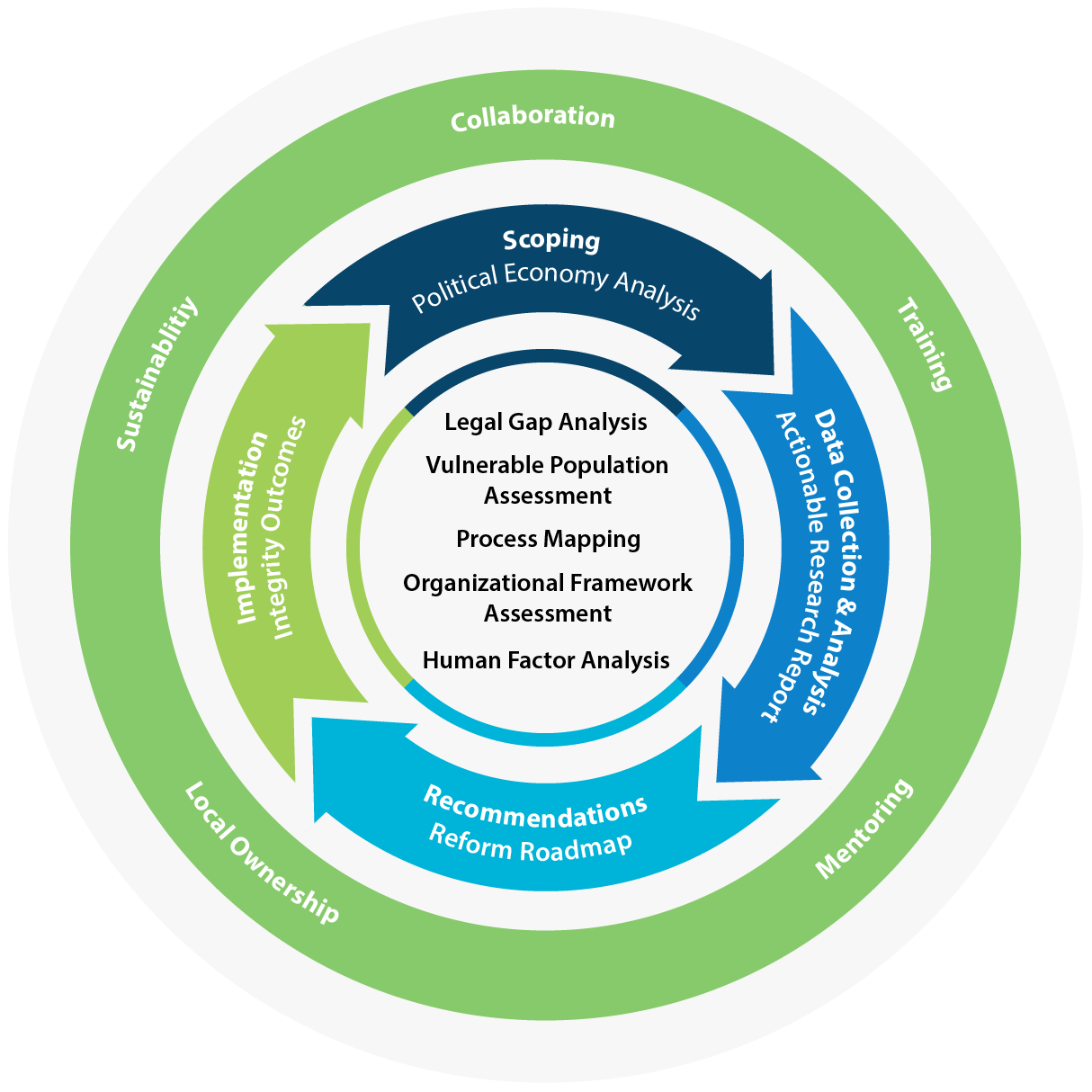UNISHKA created Systems Integrity Development™ (SID) to address internal control weakness and human factor deficiencies within an organization. Unlike Vulnerability to Corruption Assessments that uncover corruption, SID identifies existing and potential corruption risks, analyzes those risks, and then develops contextualized reforms to facilitate sustainable change. The final, and arguably most difficult, phase of an SID is to ensure that the approved reforms are implemented within the existing environment. These environments are often highly politicized with multiple groups, sects, tribes, or political parties receiving some benefit from corruption.





